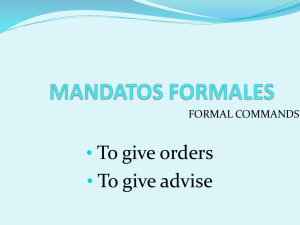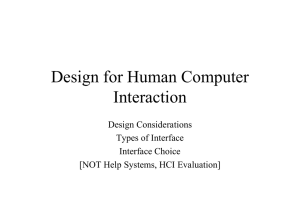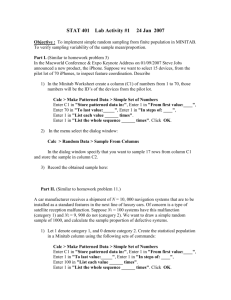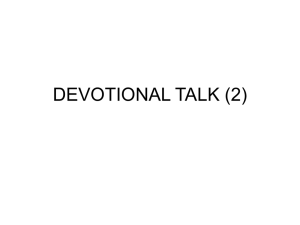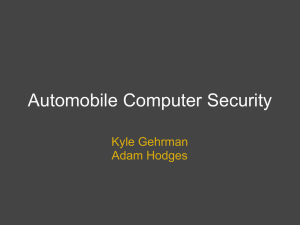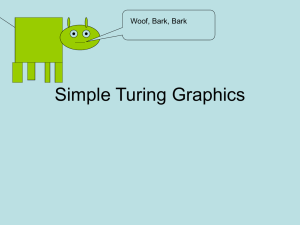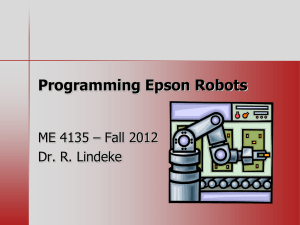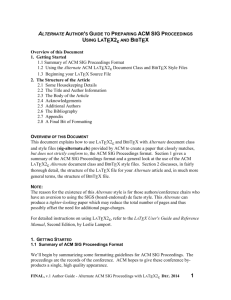Lecture 3.2
advertisement
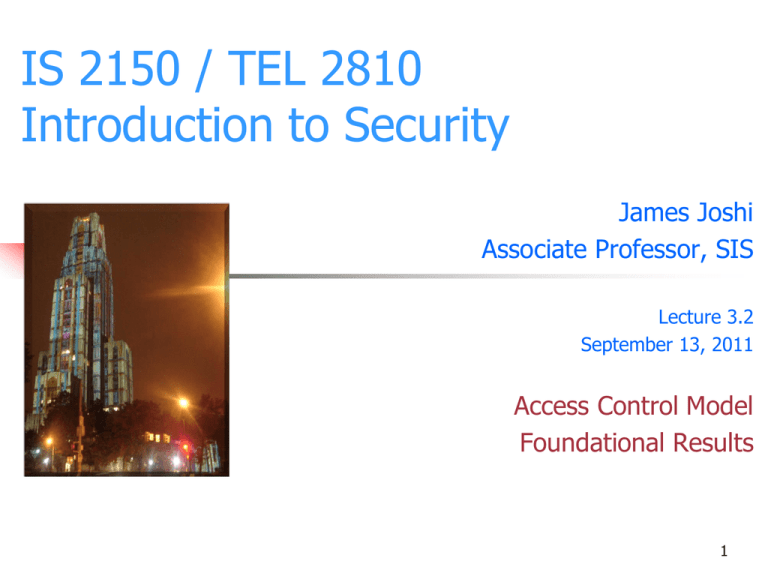
IS 2150 / TEL 2810
Introduction to Security
James Joshi
Associate Professor, SIS
Lecture 3.2
September 13, 2011
Access Control Model
Foundational Results
1
Protection System
State of a system
Current values of
Protection state (P)
memory locations, registers, secondary storage, etc.
other system components
A system state that is considered secure
A protection system
Captures the conditions for state transition
Consists of two parts:
A set of generic rights
A set of commands
2
Protection System
Subject (S: set of all subjects)
Object (O: set of all objects)
Eg.:Processes, files, devices
Right (R: set of all rights)
Eg.: users, processes, agents, etc.
An action/operation that a subject is
allowed/disallowed on objects
Access Matrix A: a[s, o] ⊆R
Set of Protection States: (S, O, A)
Initial state X0 = (S0, O0, A0)
3
State Transitions
Xi ├i+1 Xi+1 : upon transition i+1, the
system moves from state Xi to Xi+1
i+1
Xi
Xi+1
*
X ├* Y : the system moves from
state X to Y after a set of transitions
Xi ├ ci+1 (pi+1,1, pi+1,2, …, pi+1,m) Xi+1 :
state transition upon a command
For every command there is a sequence of
state transition operations
X
Y
ci+1 (pi+1,1, pi+1,2, …, pi+1,m)
Xi
Xi+1
4
Primitive commands (HRU)
Create subject s
Creates new row, column in ACM;
s does not exist prior to this
Create object o
Creates new column in ACM
o does not exist prior to this
Enter r into a[s, o]
Adds r right for subject s over object o
Ineffective if r is already there
Delete r from a[s, o]
Removes r right from subject s over object o
Destroy subject s
Deletes row, column from ACM;
Destroy object o
Deletes column from ACM
5
Primitive commands (HRU)
Create subject s
Creates new row, column in ACM;
s does not exist prior to this
Precondition: s S
Postconditions:
S´ = S { s }, O´ = O { s }
(y O´)[a´[s, y] = ] (row entries for s)
(x S´)[a´[x, s] = ] (column entries for s)
(x S)(y O)[a´[x, y] = a[x, y]]
6
Primitive commands (HRU)
Enter r into a[s, o]
Adds r right for subject s over object o
Ineffective if r is already there
Precondition: s S, o O
Postconditions:
S´ = S, O´ = O
a´[s, o] = a[s, o] { r }
(x S´)(y O´)
[(x, y)(s, o) a´[x, y] = a[x, y]]
7
System commands
[Unix] process p creates file f with
owner read and write (r, w) will be
represented by the following:
Command create_file(p, f)
Create object f
Enter own into a[p,f]
Enter r into a[p,f]
Enter w into a[p,f]
End
8
System commands
Process p creates a new process q
Command spawn_process(p, q)
Create subject q;
Enter own into a[p,q]
Enter r into a[p,q]
Enter w into a[p,q]
Enter r into a[q,p]
Enter w into a[q,p]
End
Parent and child can
signal each other
9
System commands
Defined commands can be used to update
ACM
Command make_owner(p, f)
Enter own into a[p,f]
End
Mono-operational:
the command invokes only one primitive
10
Conditional Commands
Mono-operational + monoconditional
Command grant_read_file(p, f, q)
If own in a[p,f]
Then
Enter r into a[q,f]
End
11
Conditional Commands
Mono-operational + biconditional
Command grant_read_file(p, f, q)
If r in a[p,f] and c in a[p,f]
Then
Enter r into a[q,f]
End
Why not “OR”??
12
Fundamental questions
How can we determine that a system is
secure?
Need to define what we mean by a system
being “secure”
Is there a generic algorithm that allows
us to determine whether a computer
system is secure?
13
What is a secure system?
A simple definition
A secure system doesn’t allow violations of a security
policy
Alternative view: based on distribution of rights
Leakage of rights: (unsafe with respect to right r)
Assume that A representing a secure state does not
contain a right r in an element of A.
A right r is said to be leaked, if a sequence of
operations/commands adds r to an element of A,
which did not contain r
14
What is a secure system?
Safety of a system with initial protection
state Xo
Safe with respect to r: System is safe with
respect to r if r can never be leaked
Else it is called unsafe with respect to right r.
15


